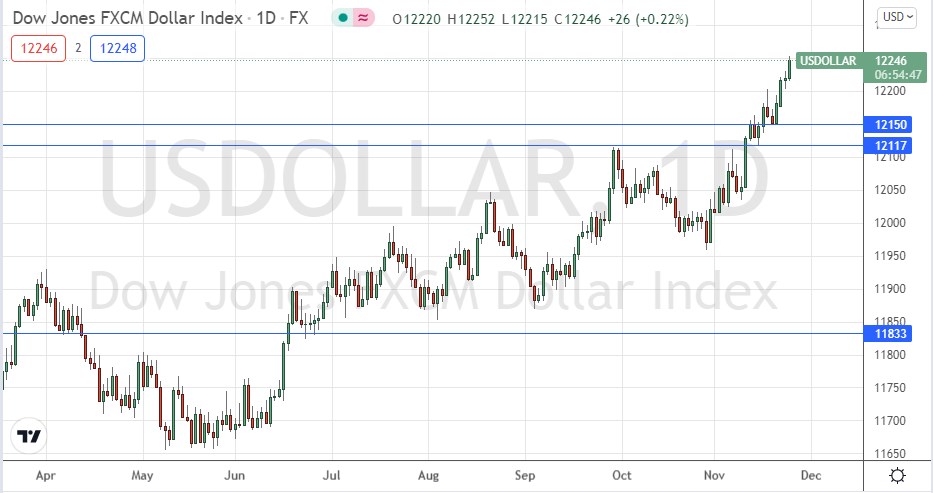US GDP Data
Preliminary data show the US economy is growing at a rate of 2.1% per year. This is substantially lower than had been seen during the post-coronavirus rebound when the economy bounced back strongly after an initial historically sharp contraction.
The rate of 2.1% is very slightly higher than last month’s annualized rate of 2.0%, but the differential is not significant. What is significant is that GDP growth in the US now seems to be back at typical levels seen during recent history. The US economy has certainly been on a strong run since the summer of 2020.
Although the headline data release for the US today was Preliminary GDP, the market is focusing on another related data release which was made at the same time: unemployment claims.
US Unemployment Claims Data
The US release which caught more interest today was unemployment claims, with weekly claimants coming in at only 199,000 – the lowest number seen in 52 years. The number is of course well below pre-pandemic levels. This is evidence that the US has, broadly, a tight labour market, which might be seen as another indication that inflationary pressures are mounting therefore possibly strengthening the case for a rate hike sooner rather than later from the Federal Reserve.
RBNZ Rate Hike
The Reserve Bank of New Zealand, as expected, hiked its interest rate by 0.25% to 0.75%, the highest rate of any major currency in the Forex market. Although the rate was raised, as it was expected and was accompanied by other statements and forecasts, it was overall seen as a slightly “dovish” data point. This is because some analysts had expected a stronger rate hike of 0.50%, which the RBNZ admitted had been seriously considered.
What Does This Mean for Traders?
Following the respective releases, the New Zealand dollar fell, and the US dollar rose. These are logical developments as the price direction matches the mainstream analytical reaction, so we might say that fundamentals, or at least market sentiment, are supportive of the bullish long-term trend we see in the U.S. dollar. However, later in the day, a member of the FOMC was issuing statements which pour cold water on the idea of an earlier rate hike by the Fed, and this could have some chilling effect. If in doubt, it is better to follow what the price is doing.
The key takeaways:
The USD continues to rise to new long-term highs, most notably against the Mexican Peso, the Japanese Yen, and the Euro, which are all trading into blue sky.
Traders may wish to exploit USD strength in the belief it will continue by going long USD/JPY or short EUR/USD, or some combination of both.
The NZD/USD currency pair is trading near long-term lows and below the 0.6900 handle but has not made a technically significant breakdown.

US Dollar Index Daily Price Chart
